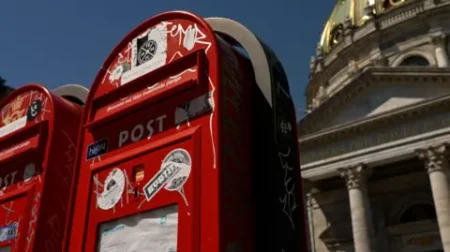In recent news, the Amazon World Zoo, situated on the stunning Isle of Wight, has shared an exhilarating development. Twin red pandas were born in a carefully coordinated breeding program, marking a significant achievement for conservation efforts concerning this endangered species. The announcement brings joy to not only the zoo staff but also animal enthusiasts and conservationists worldwide.
The red panda twins, born on June 17, 2025, are a product of the mother, Xiao, who is a ten-year-old female. The zoo’s decision to pair her with Flint, a male red panda of only ten months old brought in from Belfast Zoo, aligns with their goal of facilitating natural breeding within a controlled environment. They aimed to introduce these two remarkable creatures to each other in 2024, allowing ample time to monitor their acclimatization and interaction.
This particular species, native to the eastern Himalayas and parts of China, is categorized as endangered by the International Union for Conservation of Nature (IUCN). The population has been declining, primarily due to habitat loss and poaching for their beautiful fur. As the mother, Xiao has successfully delivered these cubs, the zoo has emphasized their fragility during the early stages of life. The young ones, currently residing in their nest boxes, will remain hidden from public view until they reach approximately three months of age, which is a standard practice to ensure their well-being and safety.
The zoo has invested in monitoring technology, including CCTV systems, which allow senior staff to keep a close watch on both the enclosure and the twins while minimizing human interference. This demonstrates Amazon World’s commitment not only to the twins’ care but also to the overall enrichment and welfare of its animals. The staff expressed their excitement through a Facebook post, stating they were “over the moon” about the successful births and recognizing the maternal capabilities of Xiao.
However, the challenges facing red pandas are plenty. According to the World Wide Fund for Nature (WWF), these creatures face threats beyond poaching, such as entrapment in snares meant for larger wildlife and the persistent issue of habitat destruction due to logging and agricultural expansion. Conservation programs like the one at Amazon World Zoo are imperative for raising awareness and fostering survival strategies for species like the red panda.
The news of the twins aligns with a broader initiative to enhance the breeding of red pandas in zoos, contributing to a potential resurgence of their population. Zoos not only provide safe havens for endangered species but also serve as crucial centers for research, education, and conservation. These institutions help build a connection between the animals and the public, fostering a sense of responsibility toward nature.
In conclusion, the announcement of red panda twins born at Amazon World Zoo is a cause for celebration within the realm of wildlife conservation. The careful management of species breeding programs plays a pivotal role in combating the ongoing threats these animals face. By nurturing these young pandas, the zoo is investing in a future where they can thrive and helping ensure that red pandas remain a vital part of our planet’s biodiversity. Enthusiasts can follow further developments about the cubs and the zoo’s initiatives through their social media channels, including Facebook, Twitter, and Instagram, to learn more about ongoing conservation efforts and how they can contribute to preserving wildlife for future generations.











